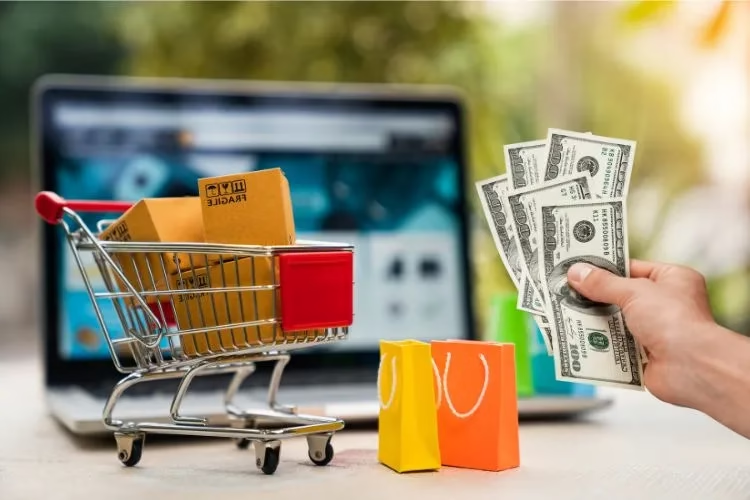Ever added something to your cart just to check the shipping cost… and ended up buying it anyway? That, my friend, is the magic of marketing tricks—those clever psychological tactics brands use to make their products feel irresistible. From color psychology to good old FOMO, these tricks aren’t just effective—they’re everywhere. And yes, they work like a charm.
In this article, we’ll break down 7 powerful marketing tricks that grab your attention, nudge your decisions, and make you feel weirdly happy about spending money (even if your budget disagrees).
Let’s dive in—brain first.
1. The Scarcity Effect: “Only 2 left in stock!”
Nothing triggers our inner panic like scarcity. The fewer items there are, the more valuable they seem.
Why it works: Our brains evolved to fear missing out on resources. So when that “Only 2 left!” label pops up, your survival instincts kick in… even if it’s just a cat-shaped teapot.
Example: Booking.com thrives on this. “Only 1 room left!” and “5 people are viewing this” creates instant pressure. Suddenly, you’re booking a getaway to Portugal… on a Tuesday.
🧠 Takeaway: Create urgency. Limit supply. Classic marketing trick, big results.
2. FOMO: Fear of Missing Out
This one’s the social sibling of scarcity—and just as sneaky.
Why it works: We’re wired to want what others have. Seeing people jump on a trend makes us want to jump too.
Example: TikTok made the Stanley Cup tumbler go viral. Suddenly, it’s not just a water bottle—it’s a personality.
Fun tip: Apple uses this marketing trick masterfully. Quiet drops, long lines, and a sprinkle of exclusivity.
3. Anchoring: That $999 Price Tag Trick
Anchoring is why that $499 smartwatch seems “reasonable”… when it’s right next to the $999 luxury version.
Why it works: We compare everything. The first price we see becomes a reference point. That’s the “anchor.”
Example: “Was $200, now $79!” Do you really know if it was worth $200? Doesn’t matter. Your brain’s already celebrating the “discount.”
🛒 Pro tip: Position pricing in a way that frames your offer as a no-brainer.
4. Color Psychology: Your Brain on Branding
Yep—colors speak. Loudly.
- Red = urgency, excitement (think: clearance sales)
- Blue = trust, calm (used by banks and tech companies)
- Green = health, freshness (Whole Foods vibes)
- Black = luxury, elegance (hello, Chanel)
Why it works: Different colors trigger different emotions. Smart marketers use this as one of their go-to marketing tricks to guide your feelings without saying a word.
🎨 Design tip: Pick your palette based on the vibe you want customers to feel—not just what looks pretty.
5. Social Proof: “Everyone’s buying it, so I should too.”
Would you buy a product with zero reviews? Exactly.
Why it works: Humans trust humans. If others are loving something, it feels safer to try it too.
Example: Amazon reviews. Influencer shout-outs. “TikTok made me buy it.” All are forms of social proof doing their persuasive dance.
Action step: Add testimonials, reviews, or social shares to your site. Let the crowd do the convincing.
6. Reciprocity: The Free Sample Effect
Ever felt like you should buy something after getting a free sample? That’s no accident.
Why it works: When we receive something for free, we feel a tiny urge to return the favor. Marketers know this, and they love it.
Example: Free guides, eBooks, cookie samples (Costco’s most dangerous marketing trick).
🎁 What to do: Give first. Then kindly present your offer.
7. The Decoy Effect: That Weird Medium Option
Ever notice how movie theater popcorn always makes the large look like a steal?
Why it works: The “medium” is a decoy—designed to make the pricier (and more profitable) option look like better value.
Example:
- Small: $4.50
- Medium: $6.50
- Large: $7
You do the math. Marketers already did—and they wanted you to.
📊 Use it wisely: Offer tiered pricing where the best deal just happens to be the one you want them to choose.
Use These Marketing Tricks with Heart
These clever marketing tricks aren’t about tricking people—they’re about understanding how we all make decisions. Use them to guide, not manipulate. To connect, not confuse.
Whether you’re building a brand or just love peeking behind the curtain, knowing these tricks will make you a smarter marketer—and maybe an even savvier shopper.
Next time your cart mysteriously fills itself, just smile and whisper:
“Ah yes. The psychology is strong with this one.”
